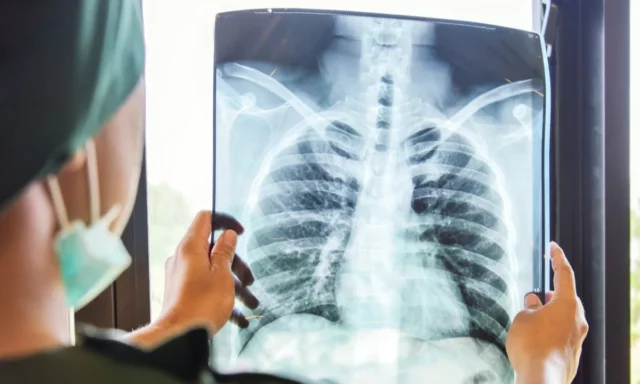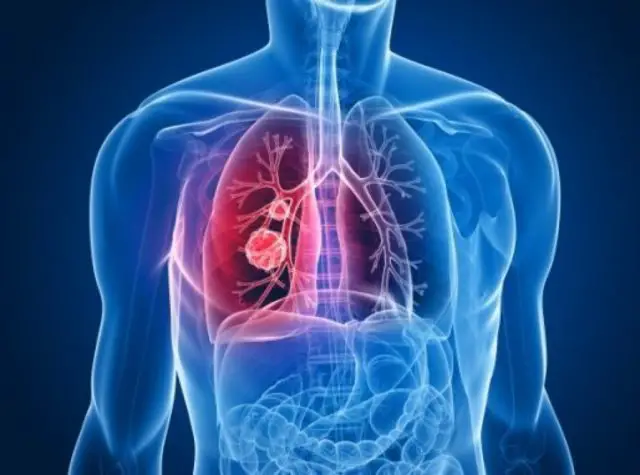According to the World Health Organization (WHO), lung cancer is the leading cause of cancer-related death in the Americas, with more than 324,000 new cases and nearly 262,000 deaths each year. It is important to raise awareness about the prevention and timely detection of this disease that, in its initial stages, could have a cure rate of 80% to 90%, a figure that decreases drastically as the tumor becomes more advanced.
In Costa Rica, according to data presented by the Global Cancer Observatory (Globocan, for its acronym), in 2020 there were 408 new cases of lung cancer (6.9%) in men and (4.0%) in women, and a total of 374 deaths in both men and women. These figures could increase according to the projections of the Pan American Health Organization (PAHO), which indicate that in 2030 there will be more than 541,000 new cases and approximately 445,000 deaths from lung cancer in the Americas.
Lung cancer is a type of cancer that begins in the lungs and develops when cells in the body begin to grow out of control, causing the body’s organs to not function properly. Doctors divide this cancer into 2 main types based on how the lung cancer cells look under a microscope:
• Small Cell Lung Cancer- It occurs almost exclusively in smokers and is less common than non-small cell lung cancer.
• Non-Small Cell Lung Cancer- This is an umbrella term used to describe several types of lung cancer. Types of non-small cell lung cancer include squamous cell carcinoma, adenocarcinoma, and large cell carcinoma.

Recognizing the symptoms
Lung cancer may not cause noticeable symptoms in its early stages, and many people are not diagnosed with the disease until it has advanced. In the lungs there are very few nerve endings and in some cases there could be a tumor in them without causing pain or discomfort. When symptoms do appear, they are different for each person, but can include a persistent cough, hoarseness, constant chest pain, shortness of breath or wheezing, weight loss, bone pain, headache, coughing up blood, etc. such as frequent infections in the lungs, such as bronchitis and pneumonia. People who develop any of the following problems should see a medical specialist who can evaluate these symptoms and develop a diagnostic plan.
“It is very important to know that lung cancer that presents symptoms is generally an advanced cancer, this invites us to remain alert against any persistent manifestation of respiratory symptoms that are occasionally considered to be benign or viral infections such as cough, voice changes , weight loss and shortness of breath, if these symptoms persist for more than two weeks, it is necessary to have a medical check-up so that they can be re-assessed in light of a new diagnosis”, said medical oncologist Adrián Guzmán Ramírez.
A timely diagnosis does make the difference
Early detection is the use of tests or examinations to find a disease in people who do not have symptoms. Even when lung cancer causes symptoms, they can be confused with or associated with other health problems, such as infection or long-term effects of smoking, which can delay diagnosis. Currently, studies show that low-dose spiral CT is the only lung cancer screening tool that reduces the risk of dying from lung cancer. low-dose spiral CT is the only lung cancer screening
Factors that increase the risk of lung cancer Anyone can get lung cancer. There are several factors that can cause cells in the lungs to mutate (change). Among the main risk factors for developing the disease are:
• Tobacco smoke– Smoking is definitely the most important risk factor for lung cancer. About 80% of lung cancer deaths are thought to be due to smoking.
• Exposure to secondhand smoke and pollution– If you don’t smoke, breathing the smoke that others produce (secondhand smoke or environmental tobacco smoke) can increase your risk of lung cancer.
• Age– Lung cancer mainly occurs in the elderly. The majority of people diagnosed are 65 years of age or older; a very small number of people diagnosed are under the age of 45. The average age of people at the time of diagnosis is approximately 70 years.
• Black men and women– Statistics from the American Cancer Society highlight that black men are approximately 15% more likely to develop lung cancer compared to white men. The rate is about 14% lower in black women than in white women.
• Air pollution– In cities, air pollution (especially near busy roads) appears to slightly increase the risk of lung cancer, with some researchers estimating around 5% of all lung cancer deaths globally may be due to outdoor air pollution.
• Exposure to inhalation of gases and chemicals– Exposure to radon, asbestos, uranium, and other inhaled chemicals such as: arsenic, beryllium, cadmium, silica, vinyl chloride, nickel compounds, chromium compounds, carbon dioxide, mustard gas, chloromethyl ethers and diesel combustion products are carcinogenic agents that increase the risk of suffering from this disease.

Treatment Options for Lung Cancer
Once your doctors have determined your lung cancer profile, they will present you with one or a combination of the following options:
• Surgery
• Radiotherapy
• Chemotherapy
• Targeted Therapy
• Immunotherapy
• Clinical trials
• Palliative/supportive care
Complementary and alternative therapies for lung cancer
Decisions about the treatment indicated to treat lung cancer are made by the health care team together with the patient. All lung cancer treatment options have potential risks and benefits. Your options will depend on the type of cancer you have, the stage of the disease, and the goals of lung cancer treatment.
Consult your medical specialist
“In the presence of symptoms that persist for more than 2 weeks, it is necessary to go to a professional in pulmonology, thoracic surgery or oncology, who can examine it and carry out the necessary studies to give an accurate diagnosis. Screening for preventive lung cancer without symptoms is performed with special imaging studies such as low-dose CT scans, however, when symptoms occur, more sensitive and accurate studies involving tomography or contrast media studies are needed to document any change that is being generated in the lungs.
Lung cancer is not exclusive to the group of people who are exposed to risk factors such as smoking, exposure to pollutants or having received radiotherapy in some part of the chest, there is also a group of people who, despite not having any risk factors suffer from lung cancer and this is due to the fact that they have genetic alterations that are not inherited, nor inherited, that generate tumors. For this reason, any change that occurs at the level of health in the life of any person, which lasts for more than 2 weeks, should be an alert to visit your family doctor or referred specialists”, added Guzmán.

